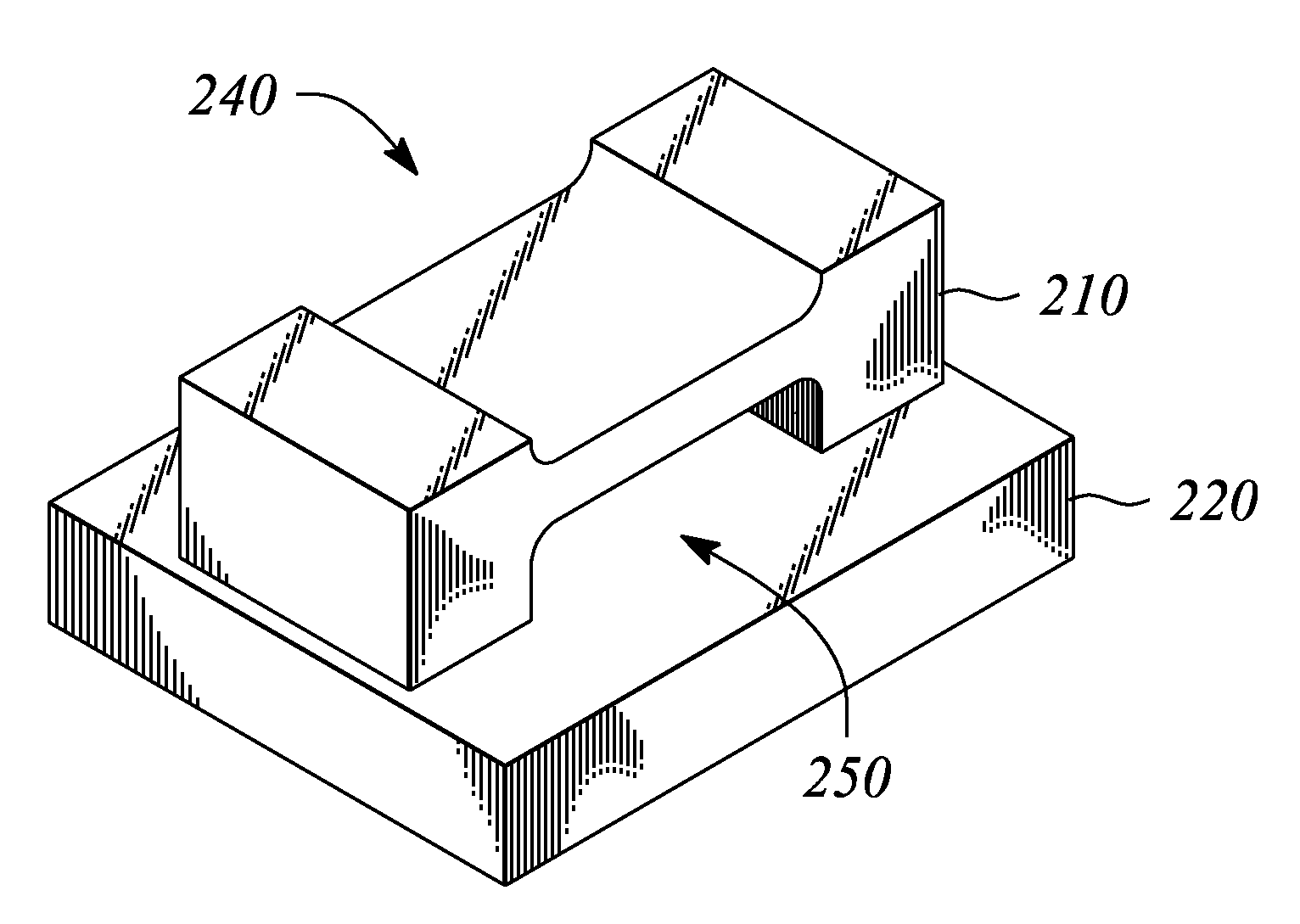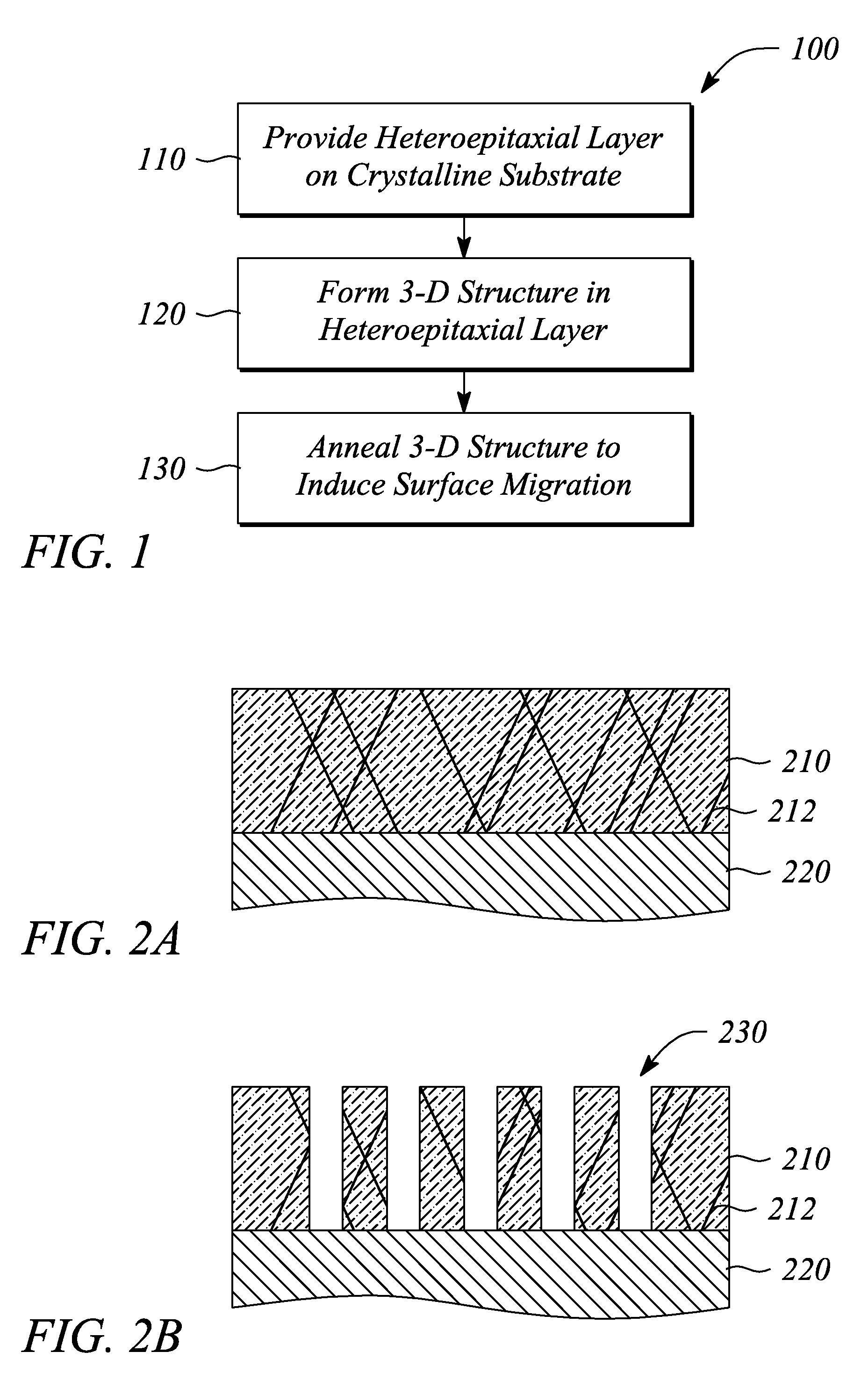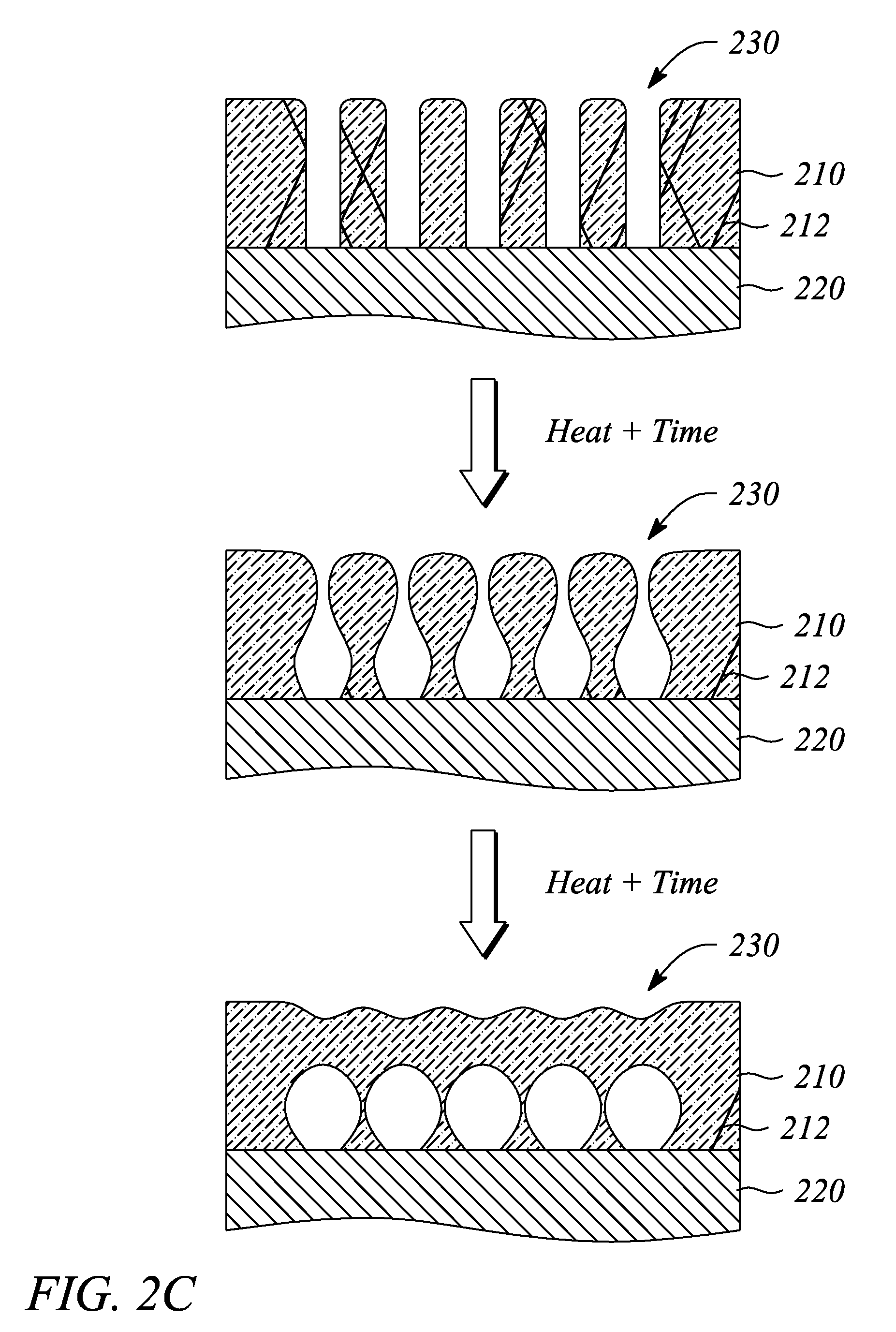Suspended mono-crystalline structure and method of fabrication from a heteroepitaxial layer
- Summary
- Abstract
- Description
- Claims
- Application Information
AI Technical Summary
Problems solved by technology
Method used
Image
Examples
Embodiment Construction
[0029]Embodiments of the present invention facilitate realizing a mono-crystalline structure suspended above an underlying crystalline substrate. For example, embodiments of the present invention may provide a so-called ‘semiconductor-on-nothing’ structure. The suspended mono-crystalline structure comprises a single crystal of a crystalline material and is formed from a heteroepitaxial layer that has an epitaxial connection with the underlying crystalline substrate, according to the present invention. In some embodiments, the suspended mono-crystalline structure may have fewer lattice defects than the heteroepitaxial layer from which the suspended mono-crystalline structure is formed. In particular, a suspended portion of the heteroepitaxial layer that forms the suspended mono-crystalline structure may have a lower lattice defect density than portions of the heteroepitaxial layer that are not suspended, according to some embodiments.
[0030]As noted above, the suspended mono-crystalli...
PUM
 Login to View More
Login to View More Abstract
Description
Claims
Application Information
 Login to View More
Login to View More - R&D
- Intellectual Property
- Life Sciences
- Materials
- Tech Scout
- Unparalleled Data Quality
- Higher Quality Content
- 60% Fewer Hallucinations
Browse by: Latest US Patents, China's latest patents, Technical Efficacy Thesaurus, Application Domain, Technology Topic, Popular Technical Reports.
© 2025 PatSnap. All rights reserved.Legal|Privacy policy|Modern Slavery Act Transparency Statement|Sitemap|About US| Contact US: help@patsnap.com



